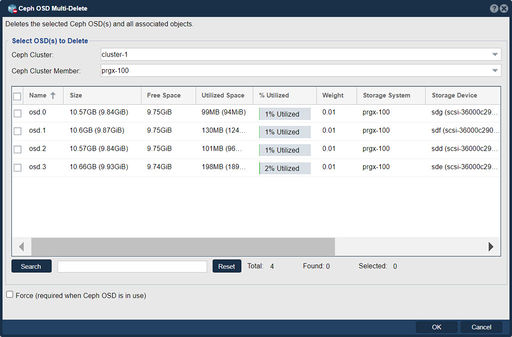Ceph OSD Delete

The purpose of OSD deletion is typically to decommission or retire an OSD node from the cluster. This could be due to hardware maintenance, scaling down the cluster, or replacing an underperforming OSD with a new one.
WARNING: Deletes the selected Ceph OSD configuration and all associated objects.
When deleting an OSD, the Ceph cluster automatically redistributes the data stored on the OSD to other OSDs, ensuring data availability and maintaining the configured data replication or erasure coding settings. The process of OSD deletion involves the following steps:
- Marking OSD Out: Before deletion, the OSD is marked as "out" within the cluster. This means that the OSD is no longer considered active and new data is not written to it. However, existing data must be replicated or recovered to maintain data redundancy.
- Data Redistribution: Ceph initiates a data redistribution process, where data stored on the OSD being deleted is copied or recovered to other OSDs in the cluster. This ensures that the required data redundancy is maintained throughout the deletion process.
- Rebalancing: As the data is redistributed, the Ceph cluster automatically balances the data across the remaining OSDs to ensure optimal data placement and performance.
- Removal: Once the data redistribution and rebalancing are completed, the OSD can be safely removed from the cluster. The removal process involves removing the OSD from the cluster maps and updating the cluster's metadata.
It's important to note that OSD deletion should be performed with caution and under careful planning to avoid data loss or disruption to the storage cluster.
Navigation: Scale-out Storage Configuration --> Data & Journal Devices --> Data & Journal Devices --> Multi-Delete OSD (toolbar)